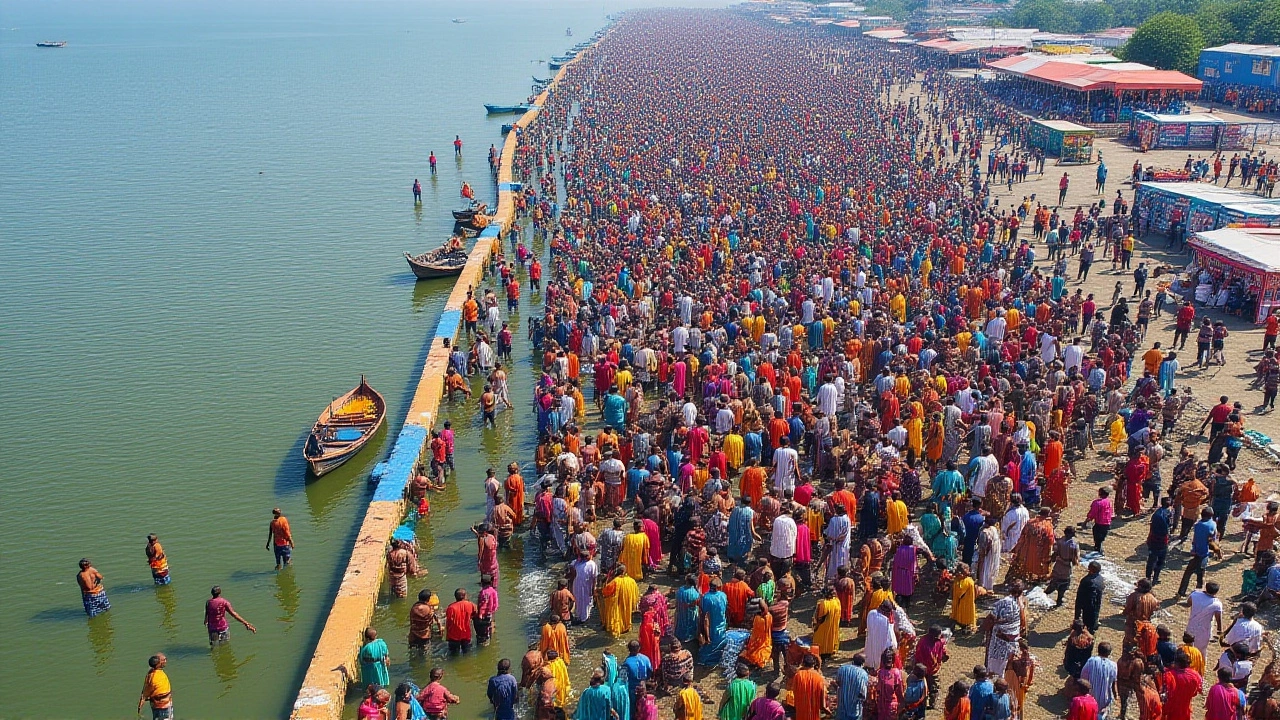On November 19, 2025, millions across India began their day with a quiet ritual: checking the Panchang for the day’s astrological rhythms. What seemed like a routine spiritual check-in carried deeper weight — this was the final day of Chaturdashi Tithi in the Krishna Paksha of Margashirsha month, before the moon’s dark phase, Amavasya, took hold at 9:43 AM IST. For families preparing for ancestral rites, business openings, or even weddings, the transition wasn’t just calendrical — it was sacred.
The Cosmic Shift: From Chaturdashi to Amavasya
The day began under the influence of the Swati Nakshatra, which held sway until just before 8 AM, after which the more ambitious Vishakha Nakshatra took over. The Moon, in Libra, balanced its energy against the Sun’s deep, transformative presence in Scorpio. This alignment, noted by AajTak and mPanchang.com, signals a turning point — the end of the waxing lunar phase’s influence and the quiet, introspective energy of the new moon’s approach.
At 9:43 AM, the lunar cycle officially shifted. Amavasya began, marking the end of Chaturdashi. In traditional Hindu belief, this is a powerful moment for honoring ancestors, performing Shraddha ceremonies, and seeking spiritual renewal. Many households will light lamps and offer water to their forebears before dawn on the 20th.
Auspicious Windows: When to Act
Despite the cosmic transition, the day offered windows of opportunity. The most sought-after moment? Vijay Muhurat, from 1:53 PM to 2:35 PM. This was the only clear, uninterrupted window for starting new ventures, signing contracts, or launching projects. According to Live Hindustan, this period carries the blessing of victory — a rare gift in an otherwise transitional day.
Equally important was Amrit Kaal, which stretched from 1:05 AM on the 20th to 2:53 AM — a time considered ideal for sacred rituals like Annaprashan Sanskar (first rice feeding) or spiritual initiations. The fact that it fell overnight meant many families would stay awake, quietly waiting for the clock to turn.
And then there was Godhuli Muhurat — the sacred hour of twilight, from 5:26 PM to 5:53 PM. This is when cows return home, and the veil between worlds is said to thin. Devotees often perform evening prayers, light diyas, and chant mantras during this time. In rural Rajasthan and Uttar Pradesh, this is when temple bells ring louder than usual.
What to Avoid: The Shadow Hours
But not all hours were blessed. The most feared period? Rahu Kaal, from 12:06 PM to 1:26 PM. Across AajTak, Live Hindustan, and mPanchang.com, this was universally flagged as a time to avoid travel, signing documents, or making financial decisions. Even buying a new phone or starting a workout was discouraged.
Equally cautionary was Yamagand, which appeared twice: from 8:07 AM to 9:27 AM and again from 9:04 PM until 6:48 AM the next day. In Vedic astrology, Yamagand is ruled by Yama, the god of death — not as a threat, but as a reminder of impermanence. It’s a time to reflect, not act.
Then came Gulika Kaal, linked to the shadowy son of Saturn, and Adal Yoga, which hovered from 6:47 AM to 7:59 AM. Both were deemed unfavorable for any new beginning. One priest in Varanasi told a reporter: “If you plant a seed in Adal Yoga, it won’t grow. It’ll just rot.”
Why This Matters Beyond Rituals
This isn’t just about religious practice. In cities like Jaipur, Indore, and Lucknow, businesses still close during Rahu Kaal. Schools delay exams. Even tech startups in Bengaluru consult Panchang before launching apps or scheduling investor meetings. The Vikram Samvat 2082 — named Siddharth — and the Shaka Samvat 1947 aren’t just numbers. They’re anchors to a cultural timeline that predates the Gregorian calendar by centuries.
The Dakshinayan — the sun’s southern journey — and the Hemant season (early winter) mean longer nights and cooler mornings. In North India, this is when families begin preparing for Diwali’s aftermath and the upcoming winter festivals. The Panchang doesn’t just tell you when to pray — it tells you when to prepare.
What’s Next?
With Amavasya now in effect, the next 15 days will be governed by the waxing moon, leading to Pratipada on November 20, and eventually Ekadashi on the 29th — a day of fasting and devotion. Many will use this lunar reset to begin new spiritual disciplines: daily chanting, charity, or even yoga retreats.
Meanwhile, astrologers like Pandit Rbhukant Goswami are already preparing their forecasts for December. His prediction? A surge in temple visits during the next Amavasya, as families seek blessings for health and prosperity in the new year.
Frequently Asked Questions
Why is Amavasya considered significant in Hindu tradition?
Amavasya, the new moon, is believed to be the most potent time for connecting with ancestors. It’s when the veil between the physical and spiritual realms is thinnest. Rituals like Shraddha are performed to offer food and prayers to departed loved ones, seeking their blessings and peace. Many also fast or chant mantras to purify the mind and release karmic burdens.
How accurate are Panchang timings across different sources?
Minor variations (1–5 minutes) between sources like AajTak, mPanchang.com, and Live Hindustan are normal due to differences in calculation methods — some use local longitude, others use fixed reference points. But for practical purposes, these differences are negligible. The consensus on major events like Amavasya, Rahu Kaal, and Vijay Muhurat is over 95% aligned across all authoritative platforms.
Can non-Hindus benefit from following the Panchang?
Absolutely. Many non-Hindus in India — including business owners, entrepreneurs, and even tech professionals — use Panchang timings to schedule important meetings or product launches. The logic isn’t religious; it’s psychological. Aligning actions with natural rhythms (like avoiding Rahu Kaal during midday stress) can reduce decision fatigue and improve outcomes, even without belief in astrology.
What’s the difference between Yamagand and Gulika Kaal?
Yamagand is ruled by Yama, associated with endings and mortality, making it inauspicious for new beginnings. Gulika Kaal, linked to Saturn’s son, is tied to delays, obstacles, and stagnation. While both are avoided, Yamagand is considered more severe — it’s the time when even spiritual practices are said to yield minimal results. Gulika Kaal is more about bad luck in action; Yamagand is about futility itself.
Why is Amrit Kaal at night? Isn’t that inconvenient?
Amrit Kaal falls during the Brahma Muhurta — the hour before dawn, considered spiritually pure. Though inconvenient, it’s believed to be the most powerful time for meditation, rituals, and healing. Many devotees wake up before 1 AM to perform Japa or offer water to the Shiva Lingam. It’s not about comfort — it’s about discipline and devotion.
How do modern temples handle Panchang changes?
Major temples like Tirupati, Varanasi’s Kashi Vishwanath, and Dwarka’s Jagannath Temple use digital Panchang systems synced with astronomical data. Priests announce changes via loudspeakers and apps. But the core rituals — like offering flowers at Amavasya or avoiding Rahu Kaal for temple entry — remain unchanged. Technology hasn’t replaced tradition; it’s preserved it.

